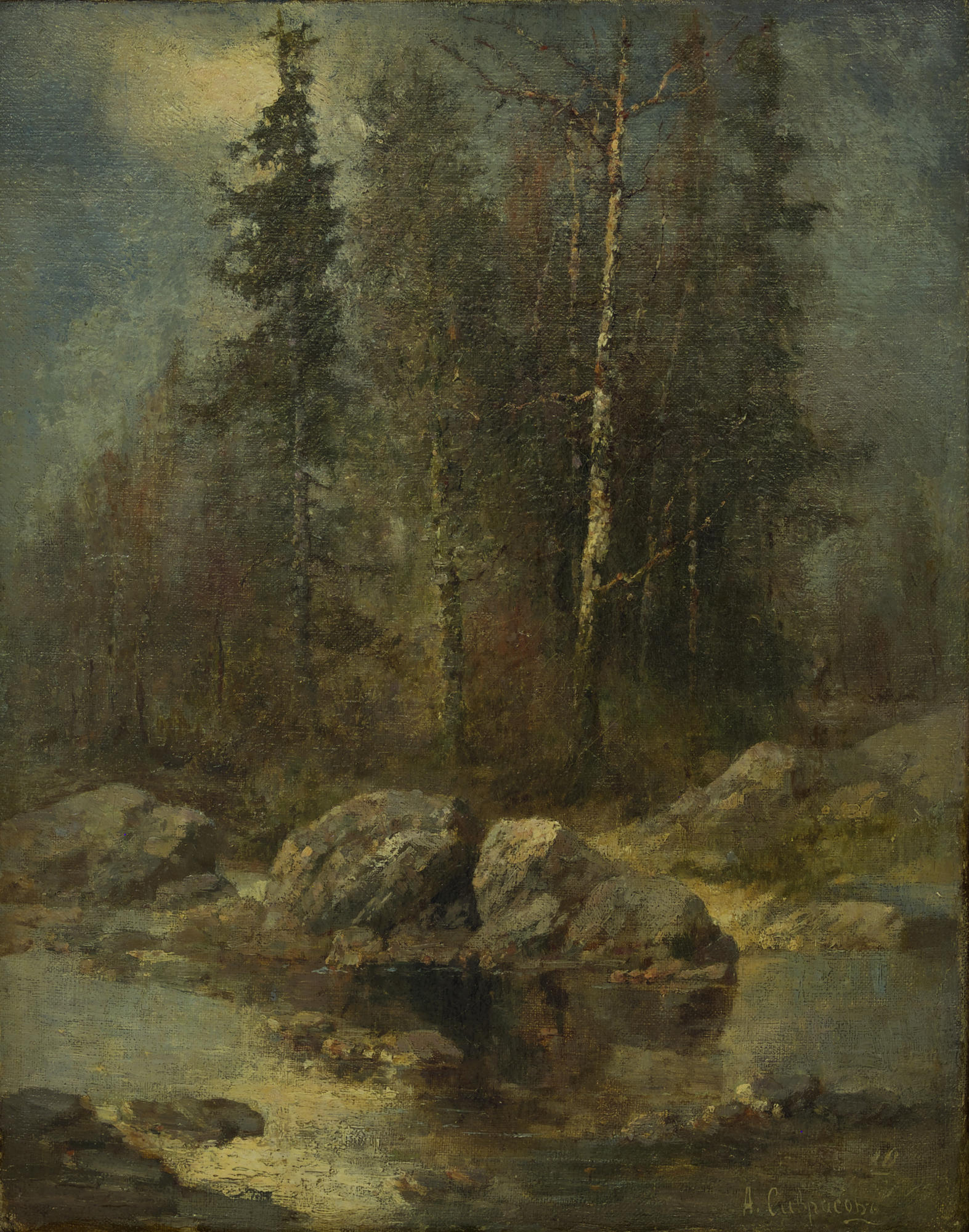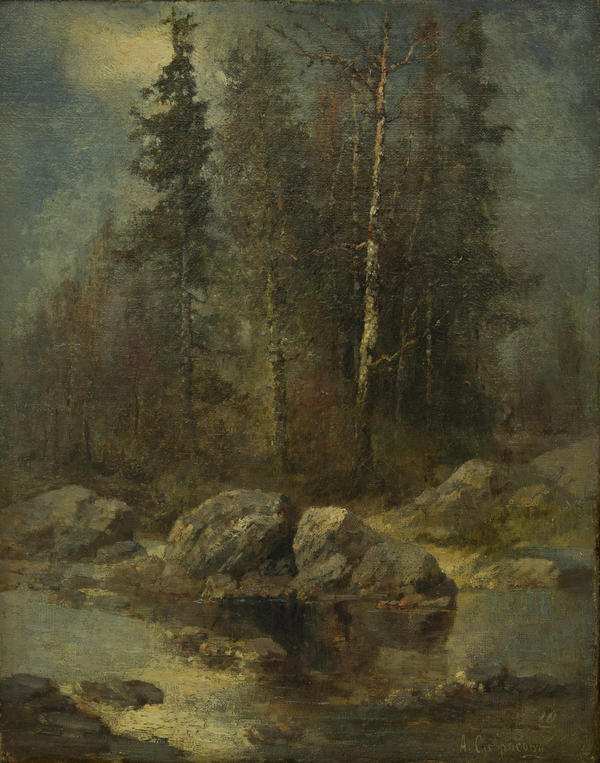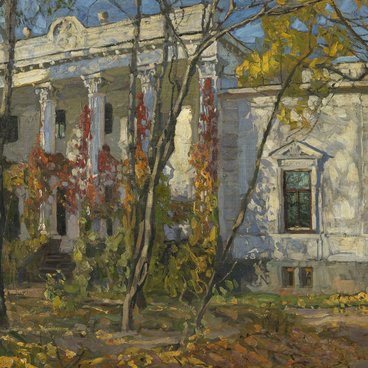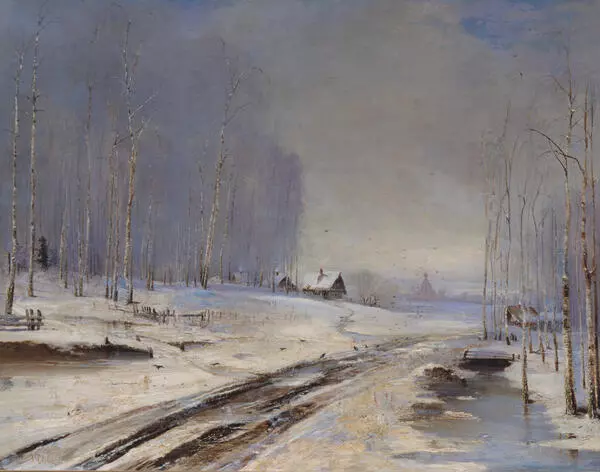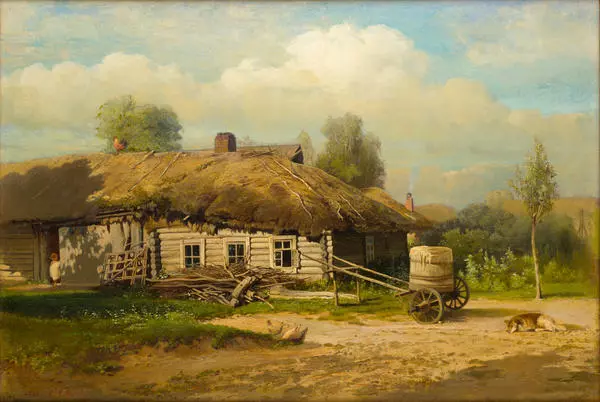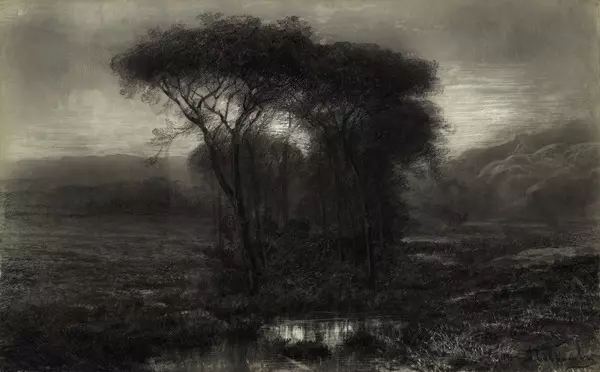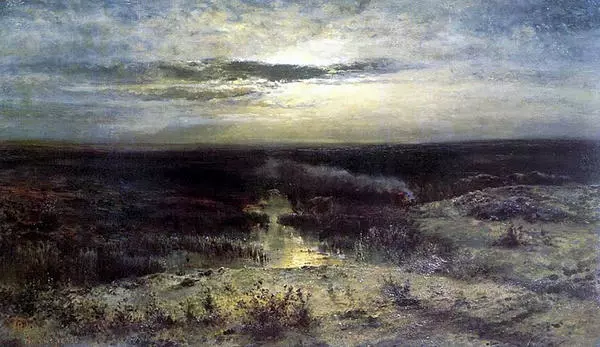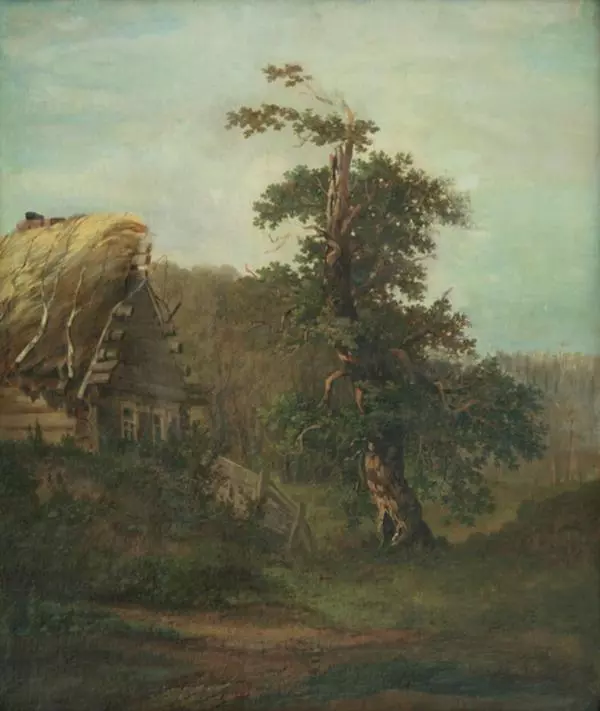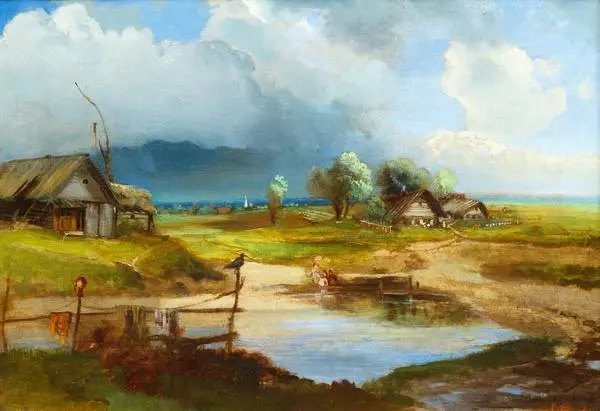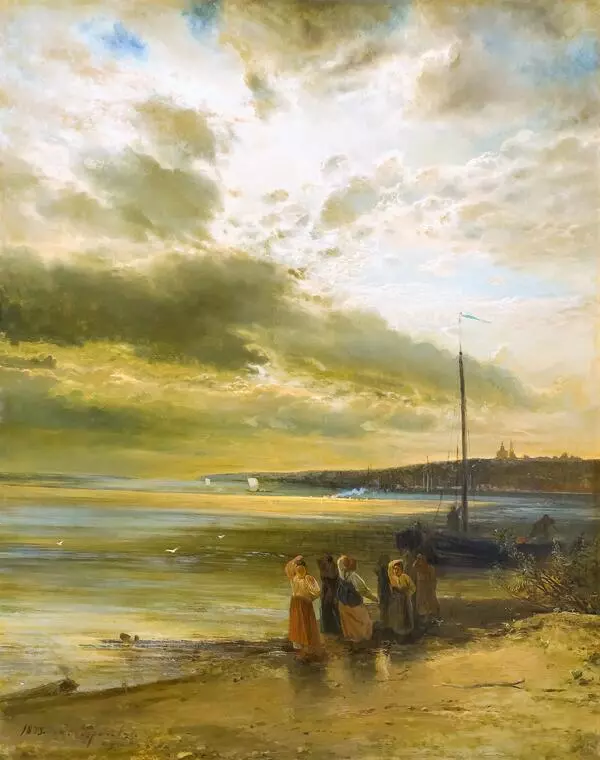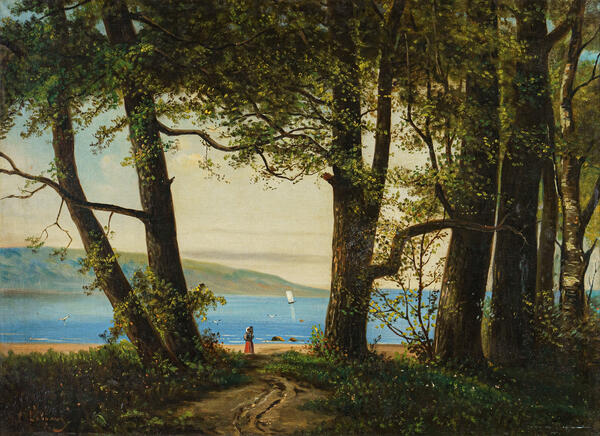The study Spring motif from the collection of Tyumen Museum and Educational Society was made by a Russian painter Alexey Savrasov. Savrasov was born in 1830 in Moscow in the family of merchants. His father wanted him to be involved in the trading business, but Savrasov entered the Moscow School of Arts, Sculpture and Architecture in 1844. Later he became one of the founders of the Association of Itinerant Art Exhibitions. In 1871 Savrasov made his most famous work — a landscape painting ‘The Rooks Have Come’. He is remembered in the history of Russian art as the father of the Russian lyrical landscape, which is full of sadness and love for motherland. Previously Russian landscapes were made in the style of Italian and French masters. Savrasov was the first to show the beauty of a regular grey-colored spring day, leafless trees and barren fields. His student Isaak Levitan said that Savrasov’s approach was “… instead of choosing exceptionally beautiful places as the subjects of his paintings, he tried to find in the simple subjects some intimate, touching and very often melancholy features, which can be so strong in our domestic landscapes and have such a great effect on a soul. Savrasov was the pioneer in rendering the lyricism of a landscape painting and the boundless love for his native land”.
The study Spring motif depicts a forest in early spring. We notice the fine, almost watercolor manner of painting. The Spring motif was drawn directly from nature on May 10, 1877, as follows from the author’s signature. There is nothing of imagination, it is just a depiction of some forest edge with trees that haven’t turned to green yet and of the remains of snow that have just begun to melt because of a belated spring.
Spring motif is perceived as a completed work, a small chamber painting made in a fine and complex technique. The middle distance — the composition center — is very carefully painted; the rest is made by free and light brush strokes. The painting was received from the RSFSR Ministry of Culture in 1960, prior to that it was kept in a private collection in St. Petersburg.
The study Spring motif depicts a forest in early spring. We notice the fine, almost watercolor manner of painting. The Spring motif was drawn directly from nature on May 10, 1877, as follows from the author’s signature. There is nothing of imagination, it is just a depiction of some forest edge with trees that haven’t turned to green yet and of the remains of snow that have just begun to melt because of a belated spring.
Spring motif is perceived as a completed work, a small chamber painting made in a fine and complex technique. The middle distance — the composition center — is very carefully painted; the rest is made by free and light brush strokes. The painting was received from the RSFSR Ministry of Culture in 1960, prior to that it was kept in a private collection in St. Petersburg.
